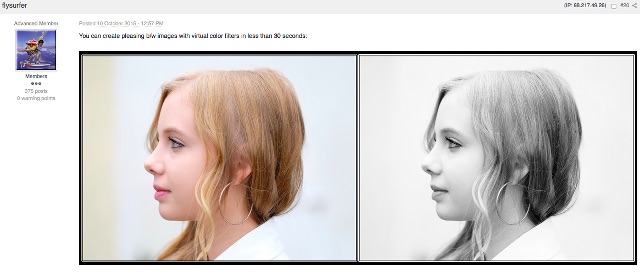About Fuji’s High-ISO performance (and the Myth of Fuji Cheating) + the virtues of the build-in RAW converter! – POLL
Let’s talk about ISO, high ISO. And it’s not about quickly sharing an image and say “Look, the X-Trans sensor is amazing at high ISO“. This is something we already know since 4 years now (X-Pro1).
I’d like to deepen this topic, thanks to an interesting & very useful Fuji X Forum thread started by Scottie: Have to Increase ISO X-T1.
We will talk about:
- the Myth of Fuji cheating with the high ISO values
- Waxy Skin tones at high ISO
- Make smart use of the ISOless sensor and the build-in RAW converter to avoid/mitigate the waxy skin tones problem
- More about the built-in RAW converter – with POLL
So, let’s start:
It all started with FXF member Scottie, who noticed that on his X-T1 “the shutter speed seems much slower than I expect it to be and have to increase the ISO” and that there is a discrepancy compared to his Nikon D3 using approximately same reach of lens and the same aperture.
Ok… I hear you saying: Fuji is Cheating! … Really?
Not really. Flysurfer (aka Rico) explains that:
“ISO is a more or less arbitrary concept (especially for brands like Canon or Nikon that are using the REI standard as opposed to the more “objective” SOS standard).”
Different standards… that’s why there is this discrepancy. No cheating. That said, I’d love all manufacturers to adopt the same standard.
[recommended reads: ISO standards at Wikipedia / Why ISO Isn’t ISO at theonlinephotographer]But the discussion doesn’t end here.
Inevitably, in the same thread, the FXF community talks about the waxy skin tones problem and also about how you can get more pleasing results using one of the probably most underestimated Fuji features ever: the build in RAW converter. Rico says:
“[with the build-in RAW converter] you can also increase the ISO after the fact. Just push the underexposed image up later in the built-in converter.
Interesting note: The camera will still use the noise reduction of the original ISO, so no skin smoothing as long as the original ISO is okay for you.
You can push up to 3 EV (depending on the camera model), so shooting at ISO 800 even when the shot needs ISO 6400 is still perfectly doable in-camera.”
Now you got it why you should also buy Rico’s book Fuji X-T1: 111 X-pert tips ;) – 40% discount with code XT1240
You see, by combining the virtues of the ISOless sensor with the one of the build-in RAW converter (or an external RAW converter) you can eliminate/mitigate the waxy skin tones problem at high ISO.
FXF member Merde played a while with the build-in RAW converter and ends up saying:
“I just love in-camera raw editing… Incredible!“
Personally I do use the build-in RAW converter quite a bit. Changing white balance, film simulation, highlights, shadows, sharpening and what not… it all can be done within seconds directly in camera. And not always, but often enough, I can skip the Lightroom/Iridient session in my (rented) apartment, just because I already optimized quickly the image with the build in RAW converter… easy :)
Of course it’s perfectly fine if you don’t use it. As always, there is no right or wrong, it’s just a matter of taste & workflow (Note I’m no Pro and my only clients, whom I deliver my images, are the parents of my students). But maybe, just maybe… you should give it a try.
So, and here is the Poll.
You can folllow the Forum discussion here.



